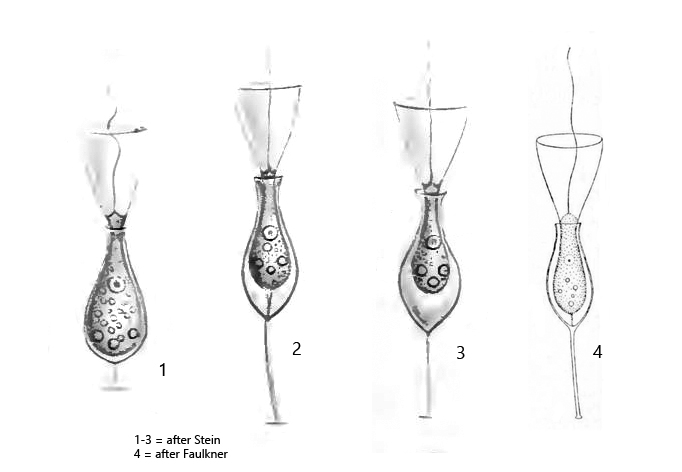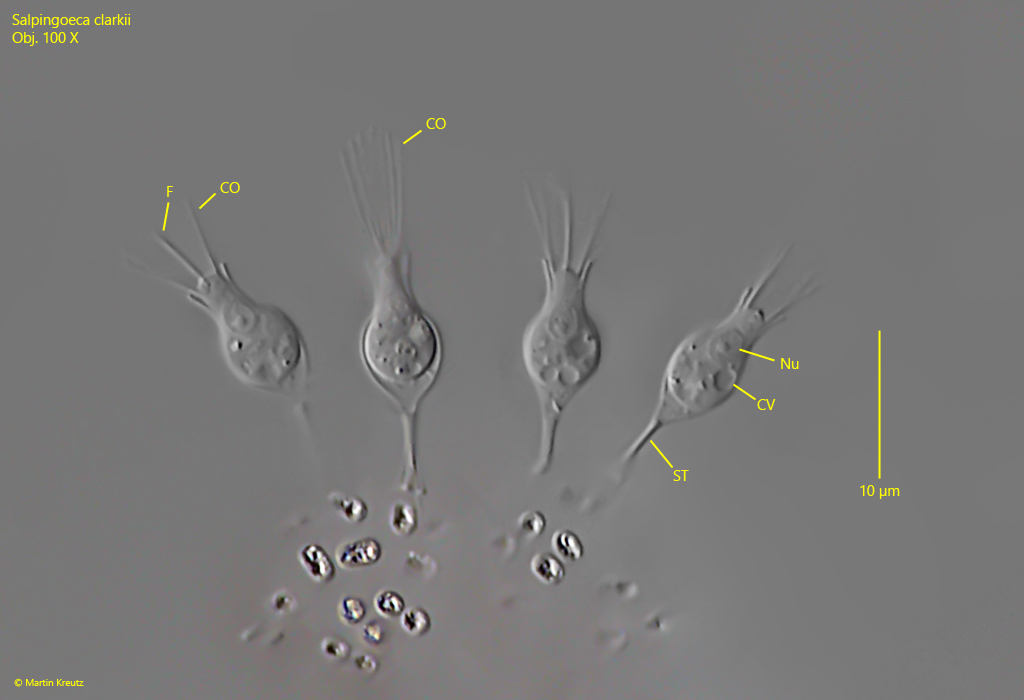Salpingoeca clarkii (Stein, 1878)
Most likely ID: n.a.
Synonym: n.a.
Sampling location: Simmelried
Phylogenetic tree: Salpingoeca clarkii
Diagnosis:
- lorica vase-shaped with solid stalk
- opening of lorica not wider than center
- length 15–20 µm (of lorica)
- cell fills mainly globular part of lorica
- one single flagellum, 2-3 times of cell length
- base of flagellum surounded by circular collar of microvilli
- one nucleus in anterior third with spherical nucleolus
- one contractile vacuole in posterior third or center

I usually find Salpingoeca clarkii on the floating cover glass, on which this flagellate often settles. The lorica of Salpingoeca clarkii is vase-shaped with a clearly tapered neck and a slightly widened opening. However, the width of the opening is never wider than the middle of the lorica. The lorica sits on a thin stalk that is not hollow. The nucleus is located in the upper third with a distinct, spherical nucleolus and the flagellum is surrounded at its base by a ring of fine microvilli which form a collar. The collar was 6-8.5 µm high in my specimens.
Salpingoeca clarkii can be distinguished from the similar species Salpingoeca frequentissima and Salpingoeca convallaria by the shape of the lorica and the type of stalk. In Salpingoeca frequentissima, the stalk is hollow and the case opening is wider than the center. The body shape of Salpingoeca convallaria, on the other hand, is clearly bell-shaped and not slender vase-shaped.

Fig. 1: Salpingoeca clarkii. L = 15–16 µm (of loricae). A group of four specimens settled on a colony of rhodobacteria. Note the solid, not hollow stalk (ST) and that the opening of the vase-shaped loricae is not wider than the center. CO = collar composed of microvilli, CV = contractile vacuole, F = flagellum, Nu = nucleus, Obj. 100 X.